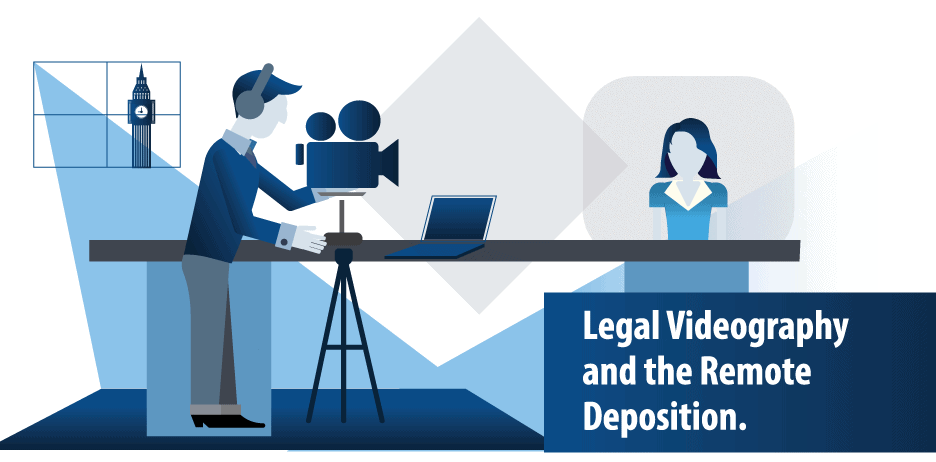Exploring the Devices of Legal Videography: Unveiling Its Procedure in Shielding Authentic Aesthetic Testament for Judicial Proceedings
In the realm of judicial process, the role of lawful videography stands as a keystone in protecting and presenting visual evidence. As technology remains to advancement, the systems behind legal videography have ended up being significantly intricate, providing a vital layer of credibility to testaments recorded on video clip. By diving right into the functional intricacies of lawful videography, one can discover the careful processes that secure the honesty of visual proof provided in courtrooms - Legal Videography. This expedition not just clarifies the historic development of lawful videography however also means the future fads that might further reinvent exactly how aesthetic statements are maintained in the world of justice.
Historic Evolution of Legal Videography
Taking a look at the historical progression of lawful videography discloses a substantial transformation in the recording and presentation of aesthetic evidence within the lawful landscape. In the past, lawful proceedings greatly relied on created transcripts and photos to document events and offer proof. With the advent of video modern technology, the lawful market witnessed a paradigm change in just how aesthetic testament was caught and presented.
The development of lawful videography can be mapped back to the late 20th century when advancements in video clip recording devices made it much more easily accessible for usage in courtrooms. This technological improvement not just enhanced the precision and reliability of aesthetic evidence yet likewise reinvented the means cases were provided to juries and judges (Legal Videography). Attorneys started to acknowledge the convincing power of video clip recordings in conveying emotions, subtleties, and non-verbal signs that composed pictures or transcripts alone could not capture efficiently

Technology Advancements in Video Documentation
What crucial technological improvements have changed video documents in the legal area? The lawful area has actually seen significant improvements in video documents technology that have actually boosted the authenticity and dependability of visual proof in judicial proceedings.
Moreover, innovations in video file encryption and watermarking technologies have actually strengthened the security and tamper-proof nature of video evidence, safeguarding it against unapproved changes or tampering. The advent of cloud storage remedies and remote accessibility abilities has structured the storage, access, and sharing of video proof, facilitating seamless collaboration among lawful specialists and making certain efficient access to important visual statements when required. These technical innovations in video documentation have definitely transformed the legal field, improving the accuracy, reliability, and admissibility of aesthetic proof in judicial procedures.
Role of Legal Videographers in Court Setups
The development of video paperwork modern technology in the legal field has actually required a crucial role for legal videographers in court settings, making certain the honesty and integrity of aesthetic testaments provided during judicial process. Legal videographers play a basic duty in catching and preserving exact visual evidence that can be crucial in court situations. Their responsibility encompasses establishing tools, tape-recording process, and creating top quality video clips that properly reflect the occasions in the courtroom.
In addition, legal videographers often work very pop over to this site closely with lawful groups to make sure that the video clip evidence lines up with the case's needs and can be efficiently offered in court to sustain the lawful debates being made. In general, the role of legal videographers in court room settings is indispensable in upholding the principles of justice and making sure the openness of legal procedures. Legal Videography.

Ensuring Admissibility and Honesty of Video Evidence
To keep the credibility of aesthetic evidence presented in lawful procedures, making sure the admissibility and honesty of video clip proof is an essential responsibility for legal videographers. Admissibility refers to the approval of proof by the court, and for video proof to be acceptable, it must satisfy specific requirements. Lawful videographers play a crucial duty in ensuring that the videos they record abide by the policies of proof, such as importance, reliability, and authenticity.
Integrity of video evidence entails maintaining the creativity and precision of the video footage from the time it is recorded until it exists in court. This includes firmly saving the video files, documenting the chain of wardship, and preventing any tampering or modifications. Lawful videographers need to follow stringent protocols to ensure the honesty of the video clip evidence and avoid any kind of difficulties to its authenticity.
Future Trends in Legal Videography
Provided the enhancing reliance on innovation in legal proceedings, lawful videographers are poised to embrace ingenious improvements forming the future of visual statement capture and discussion. Among the famous trends on the horizon is the combination of online reality (VIRTUAL REALITY) and enhanced reality (AR) technologies right into lawful videography. These technologies have the possible to transform how aesthetic evidence exists in courts, allowing courts and judges to submerse themselves in the scene of the crime or event.
Additionally, the usage of expert system (AI) algorithms for video clip evaluation is expected to simplify the process of examining and analyzing large quantities of video footage. AI can assist in recognizing crucial moments, abnormalities, and patterns within videos, boosting the efficiency of lawful investigations.

Conclusion
To conclude, legal videography has actually played a vital role in giving authentic aesthetic evidence for judicial procedures. Through technical advancements and the expertise of legal videographers, the honesty and admissibility of video clip proof are made certain in court setups. As this page lawful videography continues to advance, it will be necessary to maintain criteria that maintain the precision and reliability of visual testament for the future of legal procedures.
Examining the historical development of lawful videography reveals a considerable makeover in the capturing and discussion of visual evidence within the lawful landscape.The advancement of video clip documents innovation in the lawful area has actually required an important duty for lawful videographers in court room setups, guaranteeing the stability and integrity of visual statements provided during judicial procedures. Furthermore, legal videographers frequently work closely with legal groups to make sure that the video proof straightens with the instance's demands and can be effectively offered in court to support the lawful debates being made.To keep the trustworthiness of visual evidence presented in legal procedures, guaranteeing the admissibility and stability of video evidence is a vital obligation for lawful videographers. As legal videography continues to evolve, it will be essential to maintain standards that preserve the precision and dependability of aesthetic have a peek here testament for the future of lawful process.